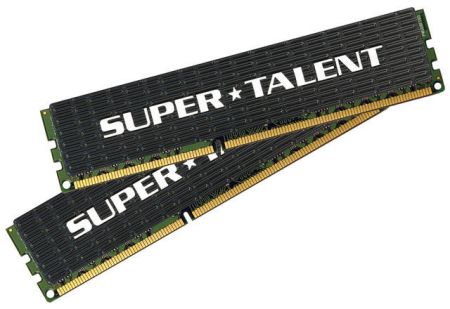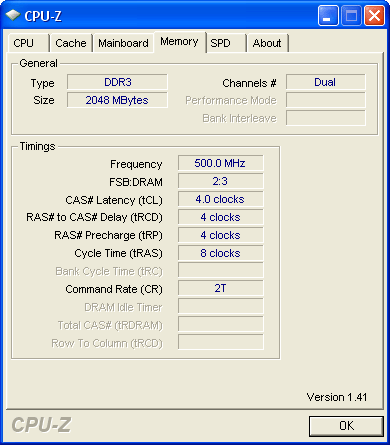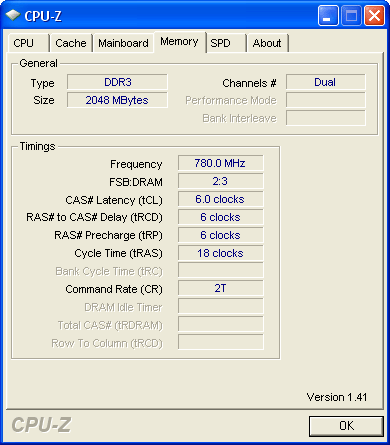Can Water push Yorkfield to 5 GHz?
The Memory: Super Talent DDR3-1600
Super Talent's DDR3-1600 is widely praised for its ability to support high speeds and low latencies; the later is important for getting good performance at "stock" FSB settings. Knowing that benchmarks (other than a few synthetic memory tests) don't benefit from memory multipliers above 1.5 times the FSB clock - at least when the memory is in dual-channel mode - we used the 2:3 FSB:DRAM ratio for all bus speeds, and focused on reducing latency for improved overall performance.
We started with DDR3-1000 at CAS 4 for the Core 2 Duo E6750 and Core 2 Extreme QX6850's FSB-1333.
The same ratio provided the Core 2 Extreme QX9770 with a 1200 MHz data rate, which required loosening the timings a little. We chose CAS 5.
The QX6850 doesn't tolerate very high bus speeds, so overclocking it to 4.02 GHz got us to a similar 1206 MHz data rate. We again used the same CAS 5 settings.
When overclocked to the CPU's limit, the QX9770 supported a higher 467 MHz FSB clock. Its memory data rate increased to 1401 MHz, and we dropped to CAS 6 to keep it stable.
The highest memory speed came with the highest FSB clock, so the E6750's 520 MHz FSB overclock brought with it a memory data rate of 1560 MHz. Super Talent's DDR3-1600 was still stable at CAS 6.
Get Tom's Hardware's best news and in-depth reviews, straight to your inbox.
Current page: The Memory: Super Talent DDR3-1600
Prev Page The Competitors: Overclocked Conroe And Kentsfield Next Page Test Settings




